Queer Travel Guide for Porto
Porto is a lot of things. It’s Portugal’s second-largest city and one of the oldest urban centers in Europe. It’s tiles and 14th-century churches and the odd brutalist building here and there. It’s pork, eggs, codfish, and cream. It’s the sound of seagulls squawking, robe-clad college kids singing traditional songs, and words said in an accent few can really understand.
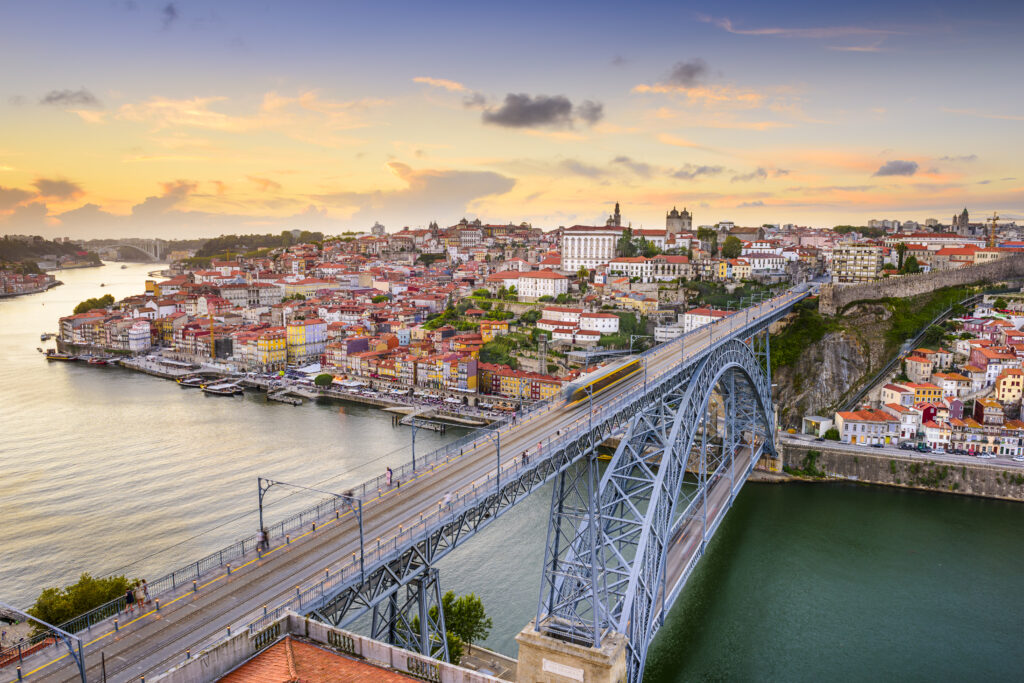
More than anything else, Porto is one of the most beautiful places you could ever lay your eyes on, and even with its deeply ingrained Catholic roots, it’s a welcoming place for queer folks to come and spend some time. Despite this, though, the queer scene can feel a little… insular. Unless you’re on the inside, and especially if you’re a visitor, it can be difficult to know where to start looking.
Look no further. Here’s how to do Porto, the queer way.
Where to Stay
All that’s hip and happening in the city of Porto is south of Marquês, east of Casa da Música, and west of Campo 24 de Agosto—and that’s where you’re going to want to stay. Selina is a hostel and coworking spot in Baixa/Aliados just steps away from trendy eateries and lively going-out spots. While Selina is a chain with locations around the world, this one’s special: the building is stunning and has a tiled facade with more of a North African influence than any of the other buildings in Porto. Apart from the different rooms for work and play, there’s a big outdoor garden terrace that anyone can waltz in for a drink or bite to eat.
For a nicer experience that’s a bit above an Airbnb price range, go with Flores Boutique Hotel & Spa, with rooms between €100 ($111) and €125 ($133). It’s a four-star hotel with gorgeous rooms, a big garden, and a prime location just south of Clérigos—not to mention a spa attached. And if you’re looking for something a little more luxe, go with Casa da Companhia Hotel, which is priced closer to €200 ($222) a night and is located right on the quaint, bustling Rua das Flores.
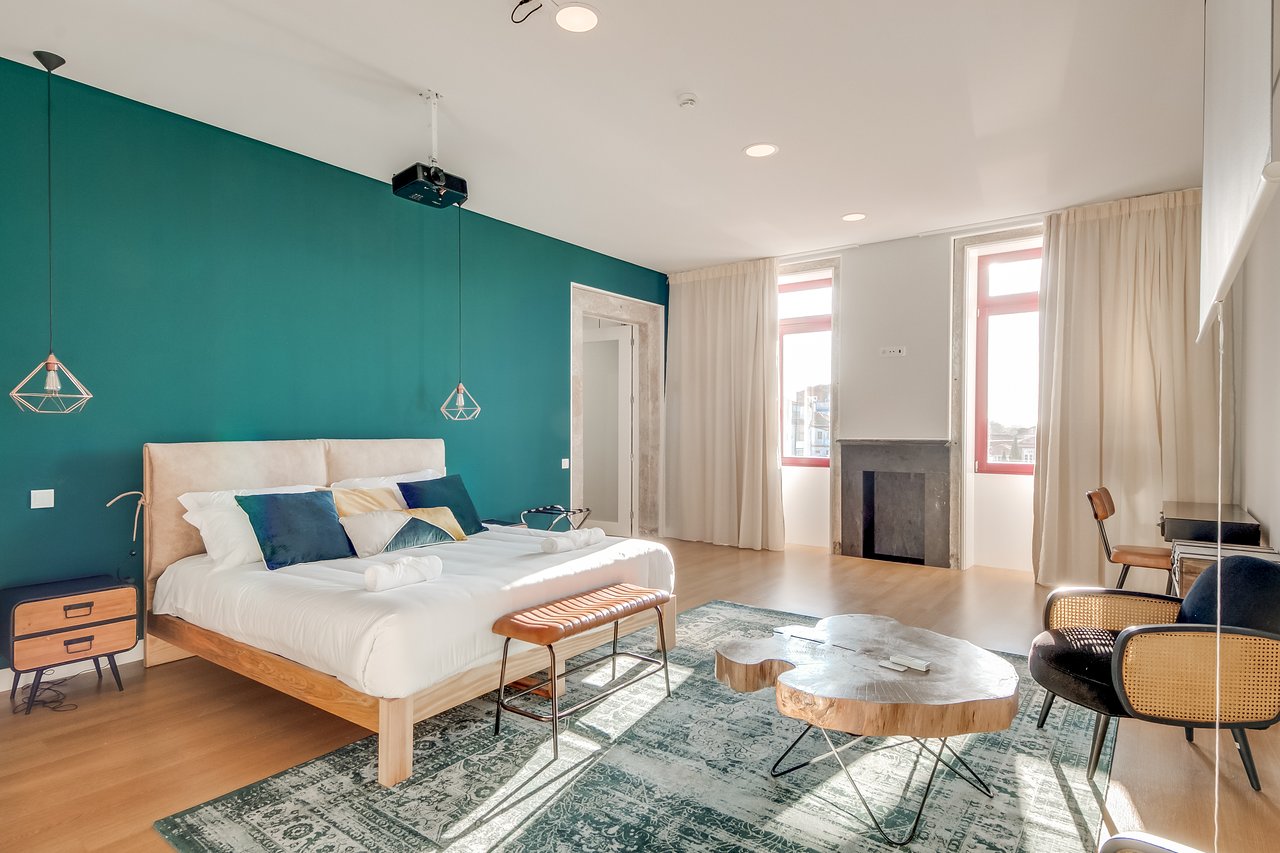
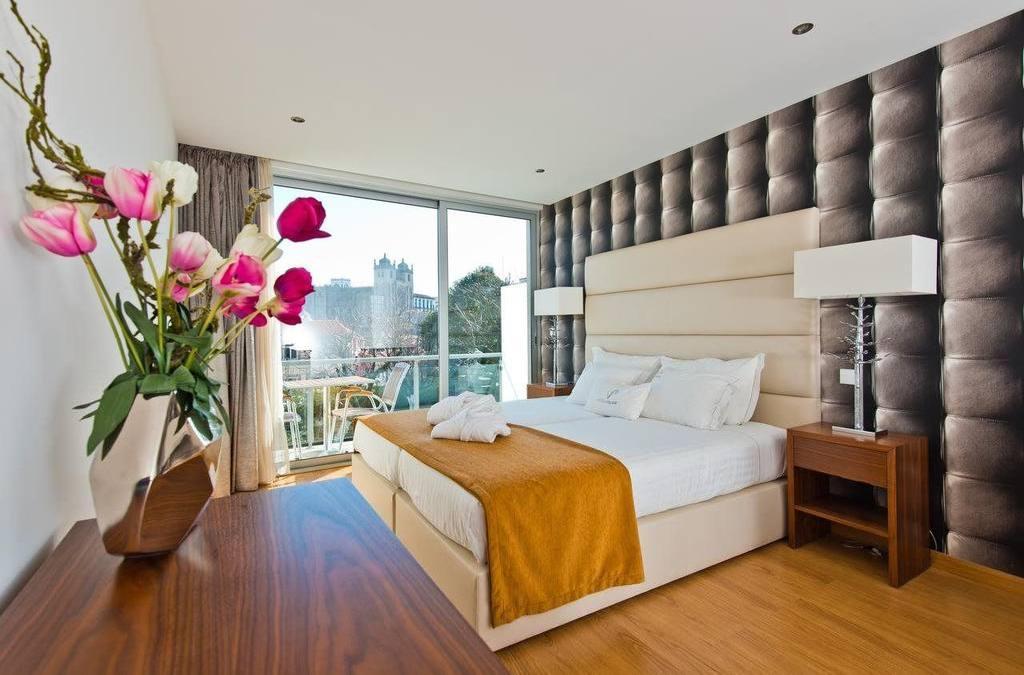
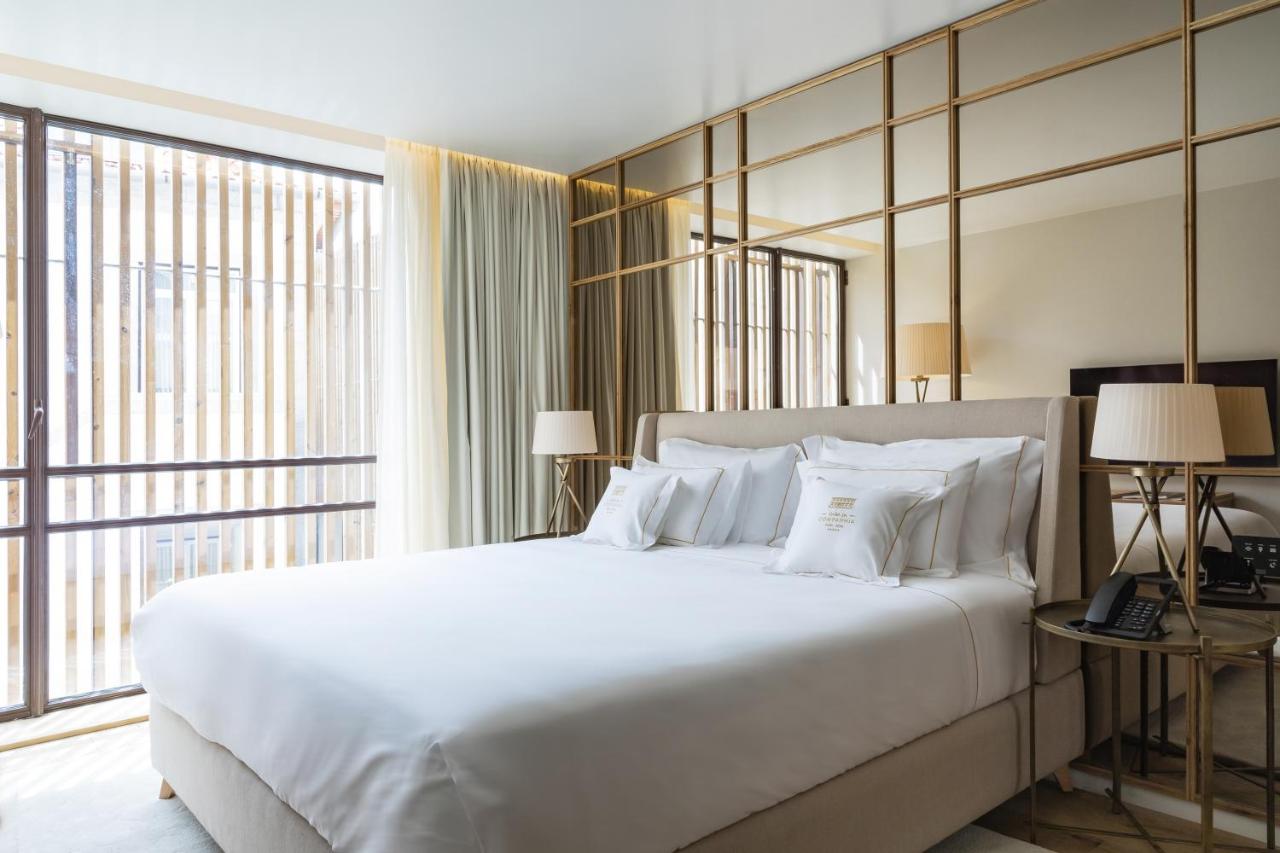
Where to Eat
Look down at anyone’s plate during dinnertime and there’s a 50% chance you’ll see a beige cube swimming in an orange sauce. This is the fabled francesinha, or “little French lady,” Porto’s take on a croque madame and the most famous dish in the city. For lack of a better word, it’s a sandwich, and a criminal one at that. Underneath the bread, melted cheese, and excess sauce lies a full butcher’s shop: choriço, bologna, steak, ham, linguiça, and maybe even a hamburger or hot dog. Top it with a sunny-side-up egg, serve it with fries and a cold glass of Super Bock, and you’re ready to go.
Nobody can agree on which francesinha in the city is the best, but everyone agrees that the sauce—a concoction of tomato sauce and beer—is the most important part. Many say Café Santiago is the best, and while its reputation has made it a tourist haunt, the sauce doesn’t have as much flavor as my personal favorite at Taberna Londrina does. Other Porto residents vouch for Brasão, Majara, Paju, Gazela, Afonso, Golfinho, or Francesinha Café, many of which also offer chicken or vegetarian versions of the iconic dish.

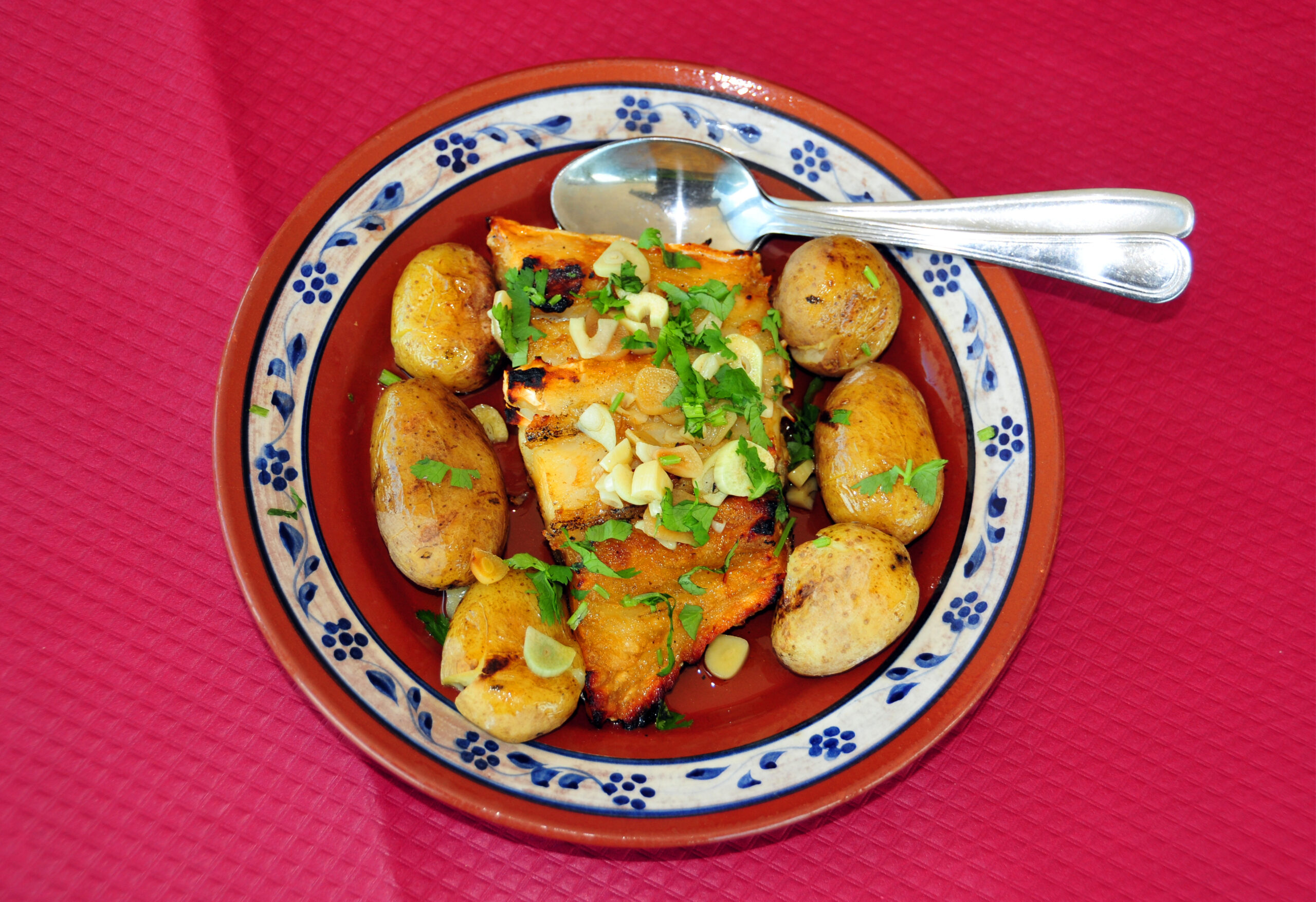
When it comes to restaurants with Portuguese cuisine, the experiences vary. If you want a cheap and local experience, check out Sai Cão, or go to any of the mom-and-pop eateries around the city and ask for the prato do dia (dish of the day). I’ve always had good ones at Jardim Réal near Universidade Fernando Pessoa, but any old place will do. For a more elevated take on Portuguese fare, make a reservation at Chama for their excellent €32 ($35) family-style tasting menu.
Other traditional dishes for those who want the full Portuguese experience include tripas à moda do Porto (tripe), papas de sarrabulho (a sort of innards and wheat porridge), bifana (pork sandwich), prego (steak sandwich), and absolutely anything bacalhau (the codfish you’ll see, and smell, in any grocery store). For on-the-go snacks, grab some camponesa-flavored chips from any grocery store or some chestnuts from the furnaces around Trindade and Boavista, which you can see down the block thanks to the thick billows of smoke. You can also pick up some pasteis de nata—an egg custard tart that Portugal is perhaps best known for—from any confeitaria in town.
Now for the gay part. If there’s one thing queer people like (and I say this as a New York queer), it’s veganism. And boy do I have the place for you! Casa da Horta is a cultural center near the water that serves good, inexpensive vegan food and even better vibes. It’s volunteer-run and leftist through and through, seen both in their manifesto as well as the flyers scattered throughout. To top it off, depending on the night (and depending on whether or not you get a reservation), you can catch live, traditional folk music performances from all across Europe. Whether you’re vegan or not, this place is a standout—and a nice break from the cholesterol bombs regardless.
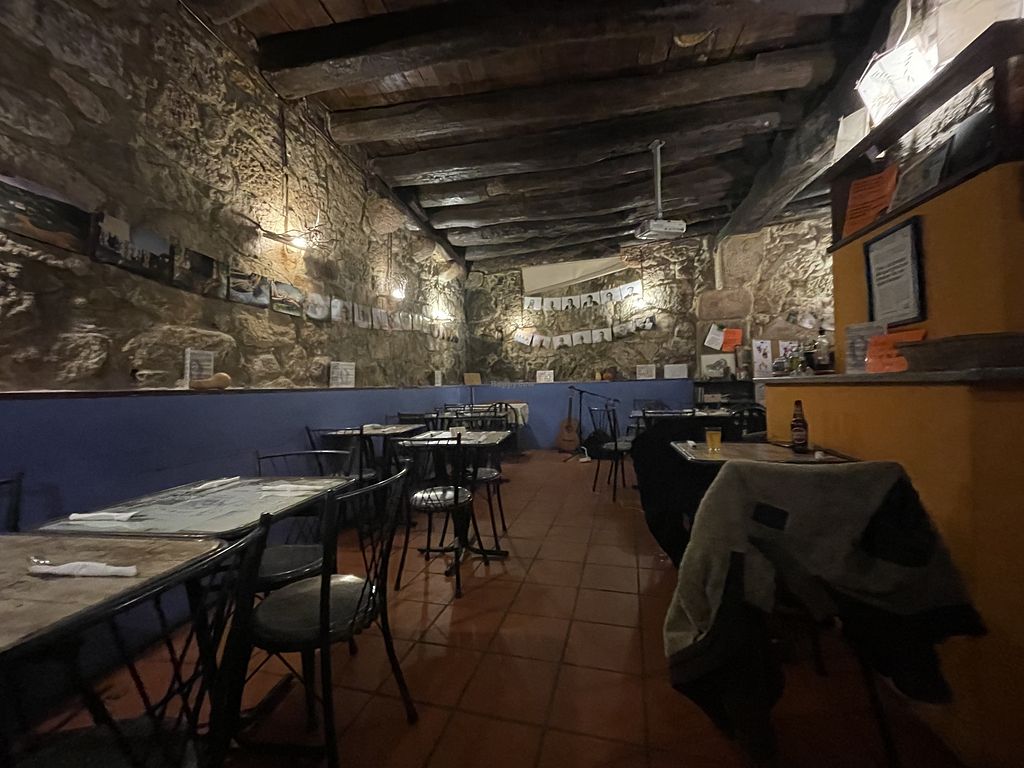
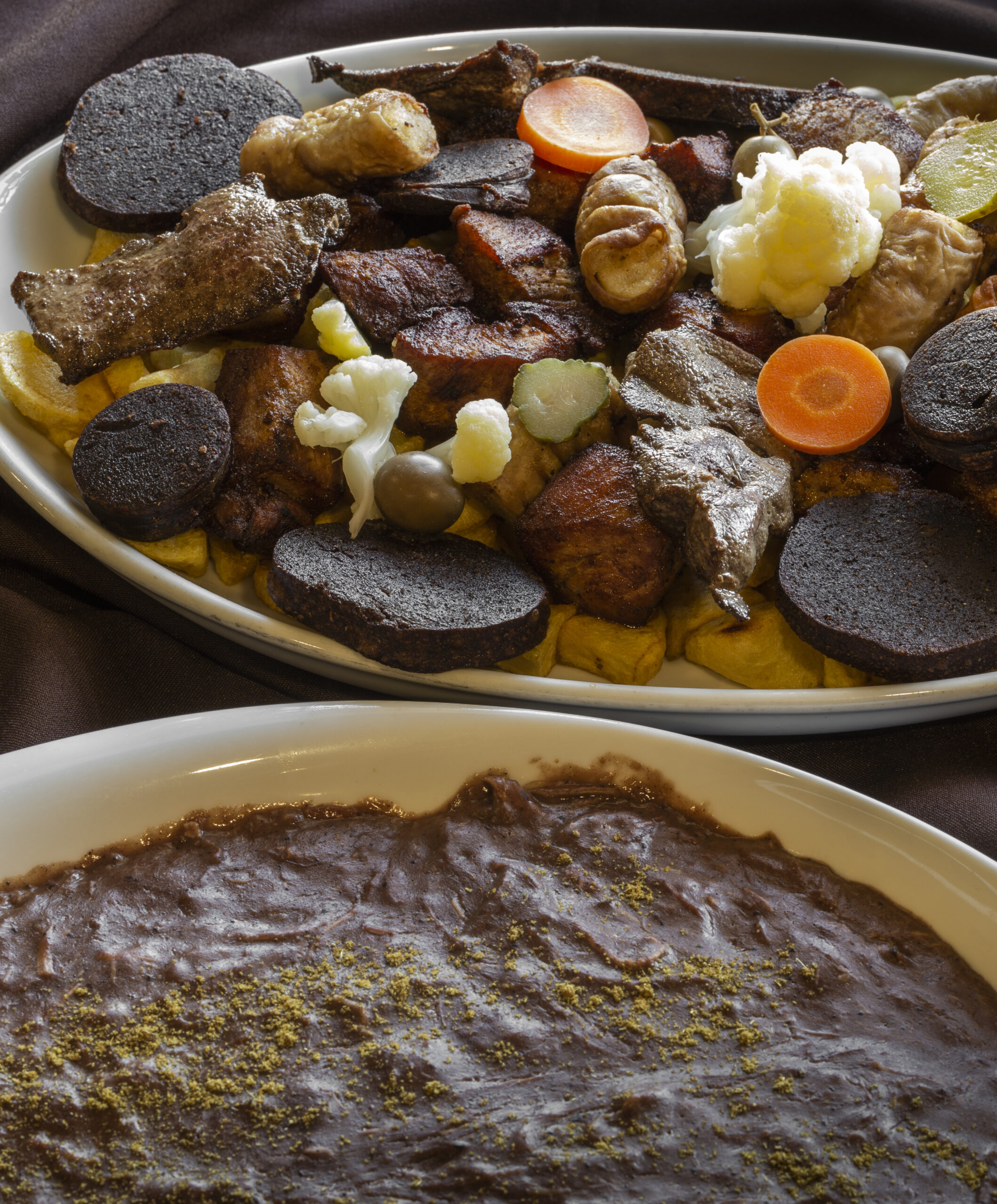
What to Do
Apart from just walking around and taking in the gorgeous azulejo tiles, the most magical sites in Porto are its stunning gardens. Jardim das Virtudes is a must, with its winding nooks and crannies, reminiscent of English gardens, that cut along a hillside. Split your sunsets between Palácio de Cristal, where you’ll be in the company of some peacocks and (of course) roosters, and Jardim do Morro. And let me tell you, Jardim do Morro is something else: it’s set atop a hill in Gaia overlooking all of Porto. College kids sit around in clusters drinking Super Bock and cheap wine, and there’s almost always someone playing music. It just might be the most romantic place I’ve ever been.
If you’re interested in less of a tourist beat—and maybe one with more of a socially conscious edge—you simply have to check out The Worst Tours. A group of ex-architects founded this anti-tour company after the 2014 recession, and they take you and a group of Portugal’s most interesting visitors on an excursion that’s decided the day of the tour. Since these are architects, we’re talking about, you get the chance to learn about Porto’s socioeconomic landscape through the lens of housing and urban planning. And, going along with the values of the tour, it’s pay-what-you-wish to accommodate everyone.
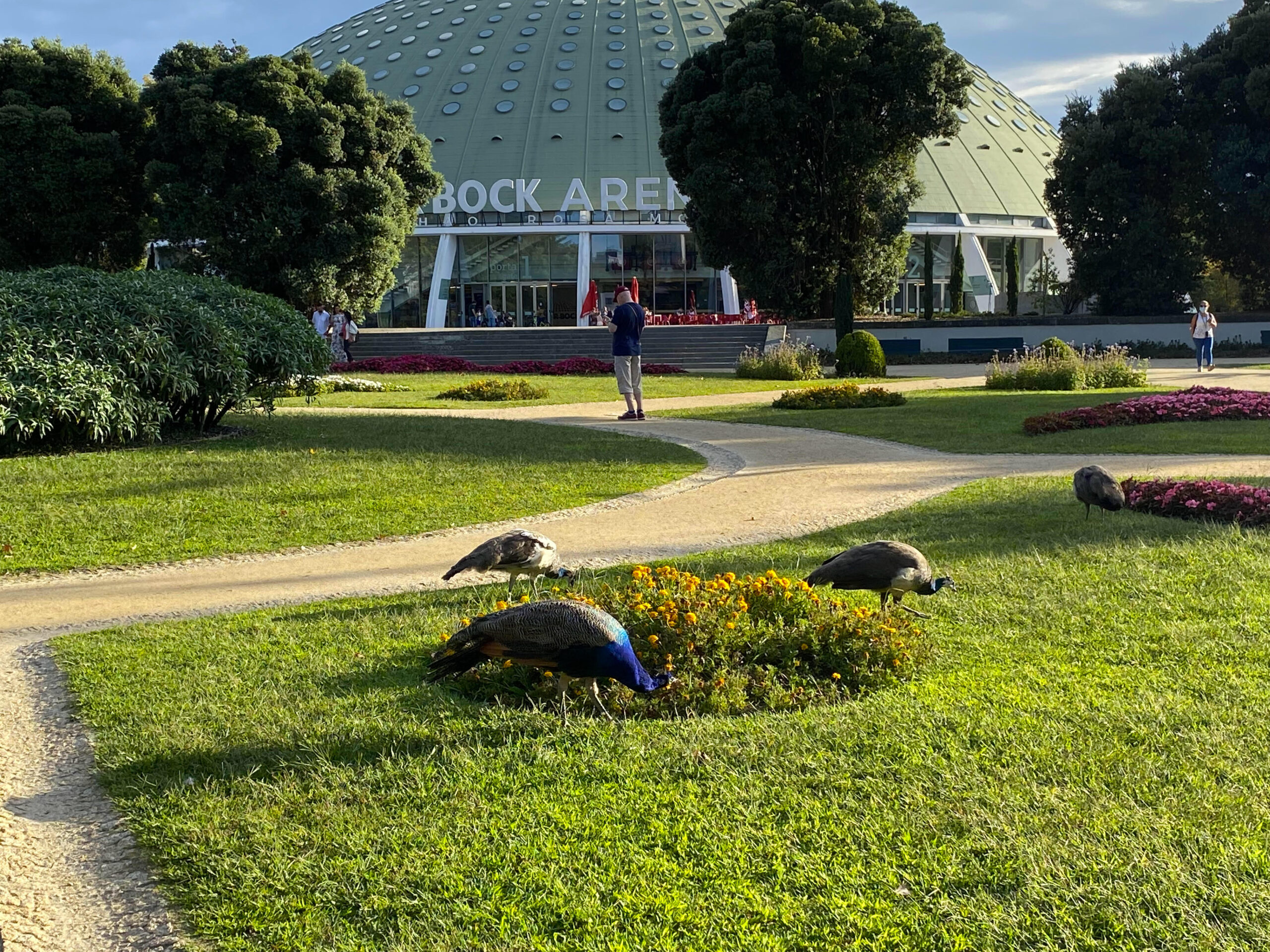
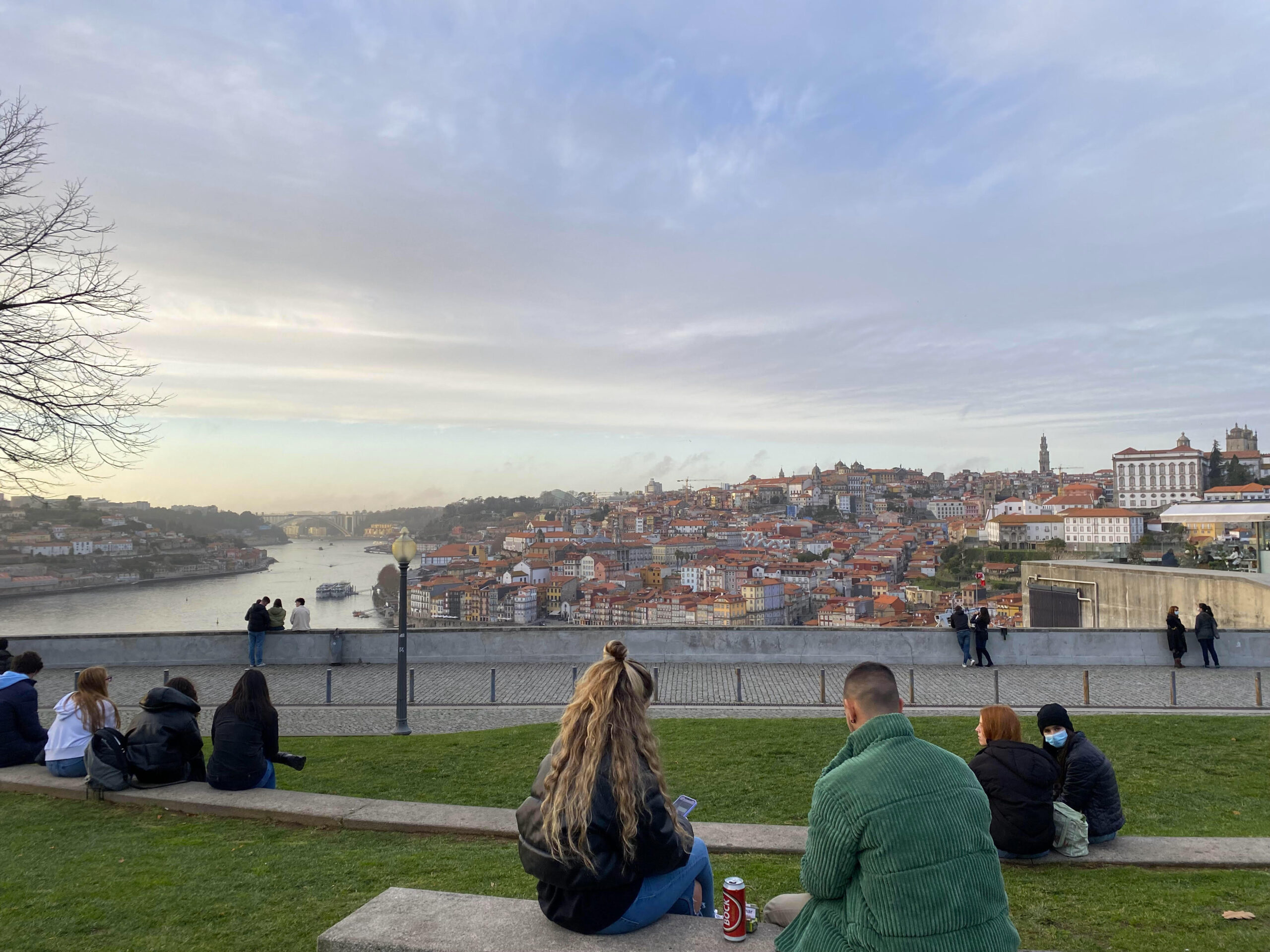
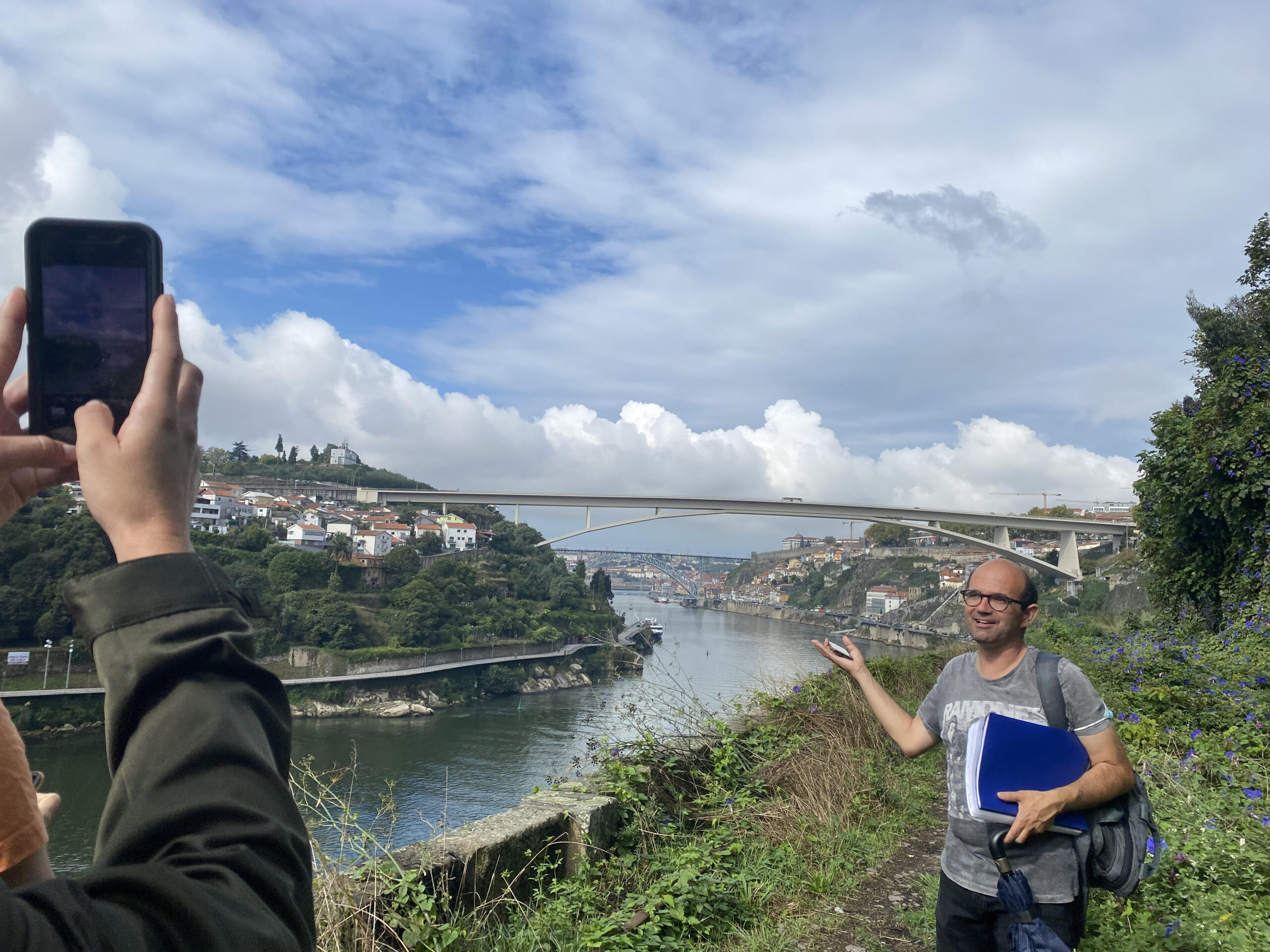
A lot of people come to Portugal with one goal in mind, and that goal is to drink as much good wine as possible. Porto, with its proximity to the Douro Valley, is a not-to-be-missed stop on any queer traveler’s itinerary. A Cave do Bon Vivant is one of my favorite spots in the whole city. It’s a wine bar run by a suspenders-clad French guy who only ever asks, “red or white?” And, in return, he brings you the most incredible local, natural, and biodynamic wines you’ll ever taste. Other great places to have a glass are Capela Incomum, a famous but worthwhile bar located in a chapel, and Mariage à Trois, a hidden gem that offers some impressive natural wines and a very fun tasting experience.
If you want more fanfare, though, head across the river to Gaia. World of Wine offers seven different wine-centric museum experiences, with exhibitions dedicated to everything from cork to the history of the region to even the cultural significance of drinking vessels. Plus, the patio bar has an exceedingly lovely view of the city. Taylor’s Port Cellars is another must-see, with a tour that has you walking through the cellars to learn the rich history of both the port trade and Taylor’s itself. Both spots offer tasting experiences, and for Taylor’s, a small tasting is even included.
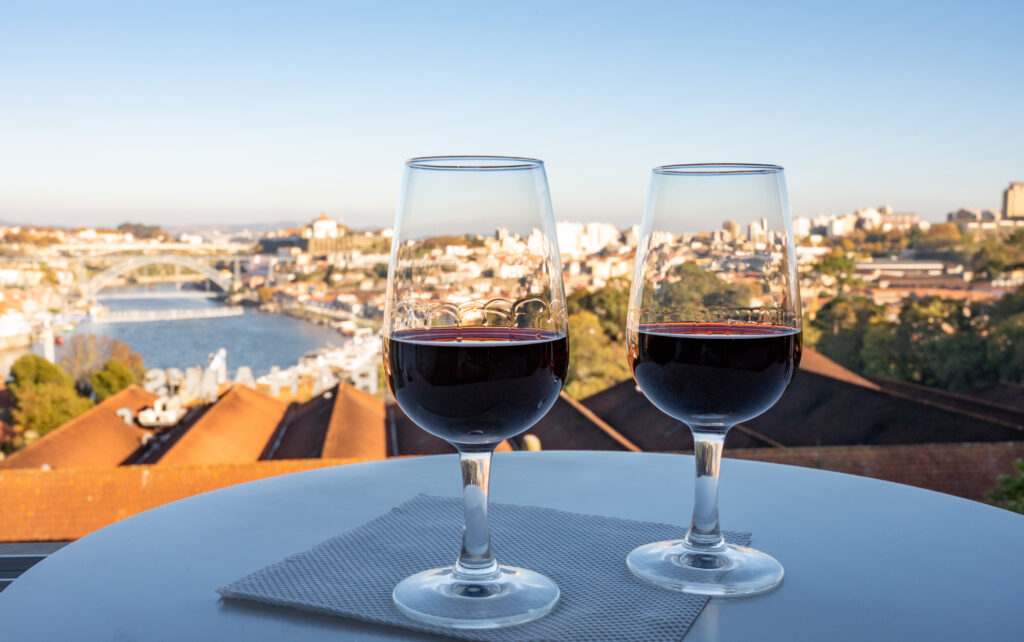
Some other highlights include Bar of Soap, a spot to grab a casual drink that my friend describes as “the place where the nice gays go.” Gazete Azulejos is a popular tile painting workshop, an offshoot of a tile preservation initiative where you can learn about azulejos and paint your own. And, if you’re looking for a more offbeat place to spend your time, Yesterday is an honorable mention as well. Portugal-born and New York-raised Henri is the friendly owner of this quirky thrift shop, and he reuses or upcycles absolutely everything—both for himself and for us.
Other places to go and things to see: Torre de Clérigos, Museu Nacional Soares dos Reis (art exhibitions), Serralves (contemporary art), Portuguese Centre of Photography, FC Porto Museum, Museu Nacional da Imprensa (printing), and Sé (Porto Cathedral). But skip Lello, arguably the most famous attraction in Porto since it allegedly inspired legendary transphobe, JK Rowling. Apart from the unfortunate JK connection, it’s too tiny to be worthwhile, and the line is preposterous. You’re better off grabbing a port wine tonic at Base, the bar up on the grassy area right next to it.
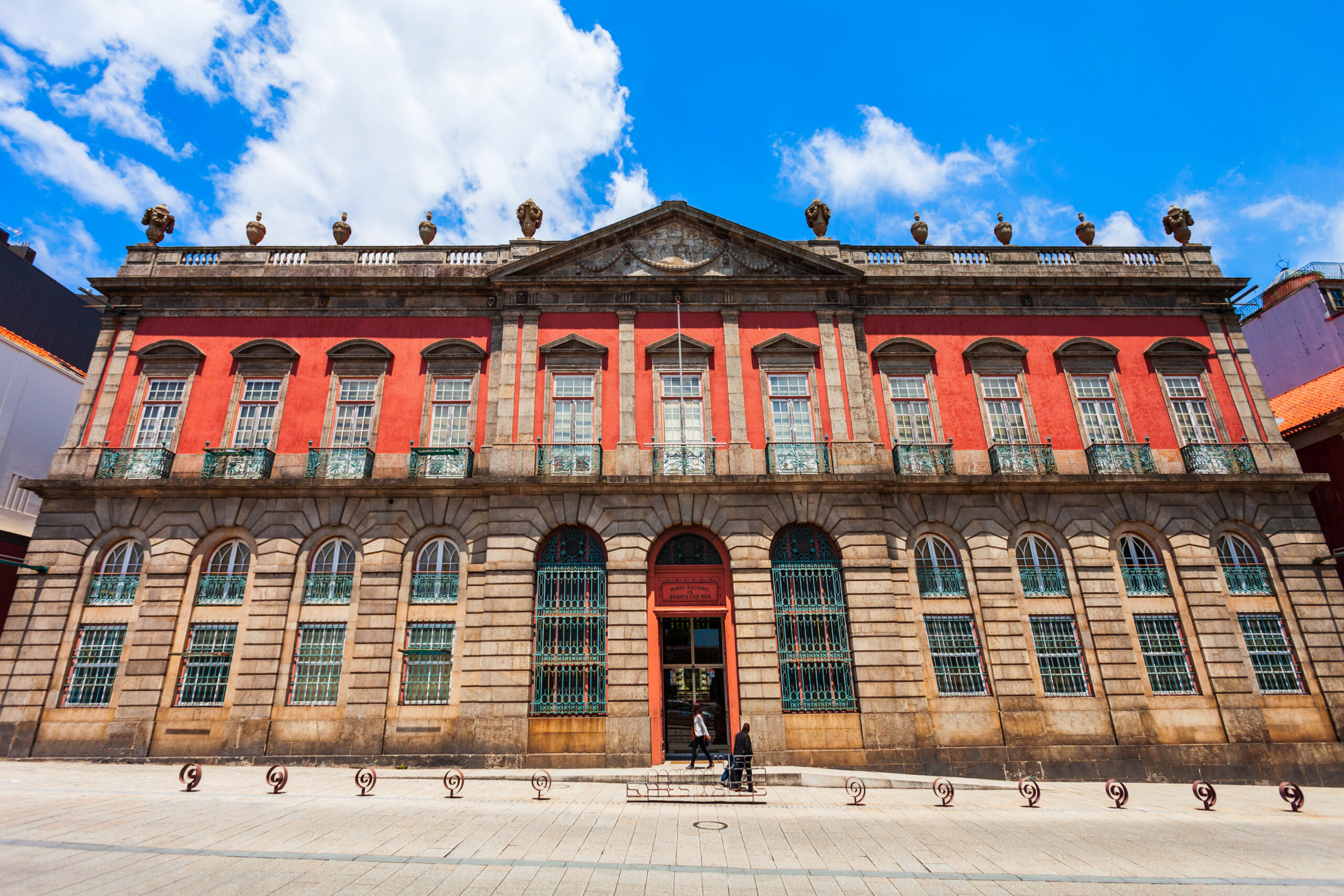
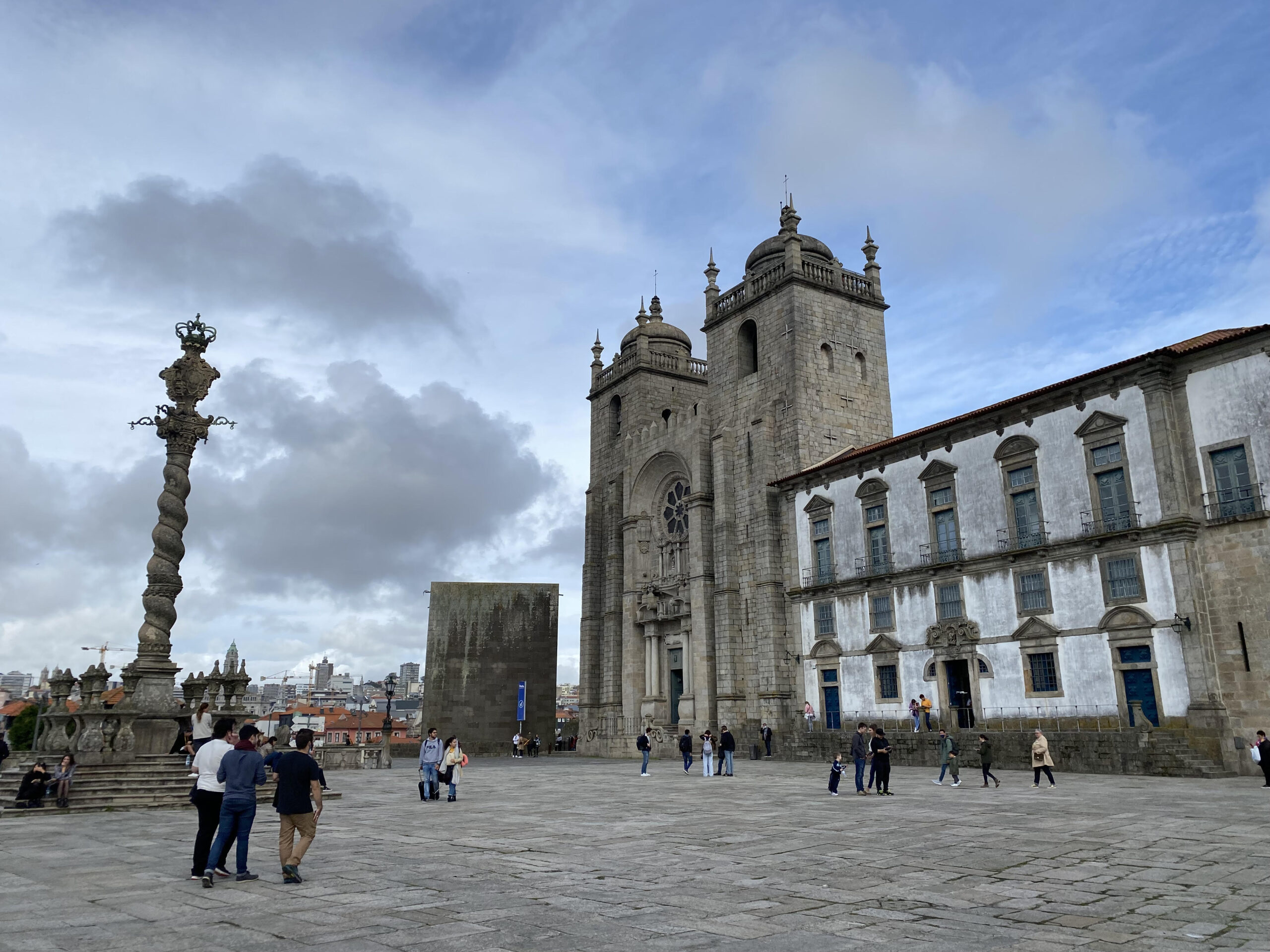
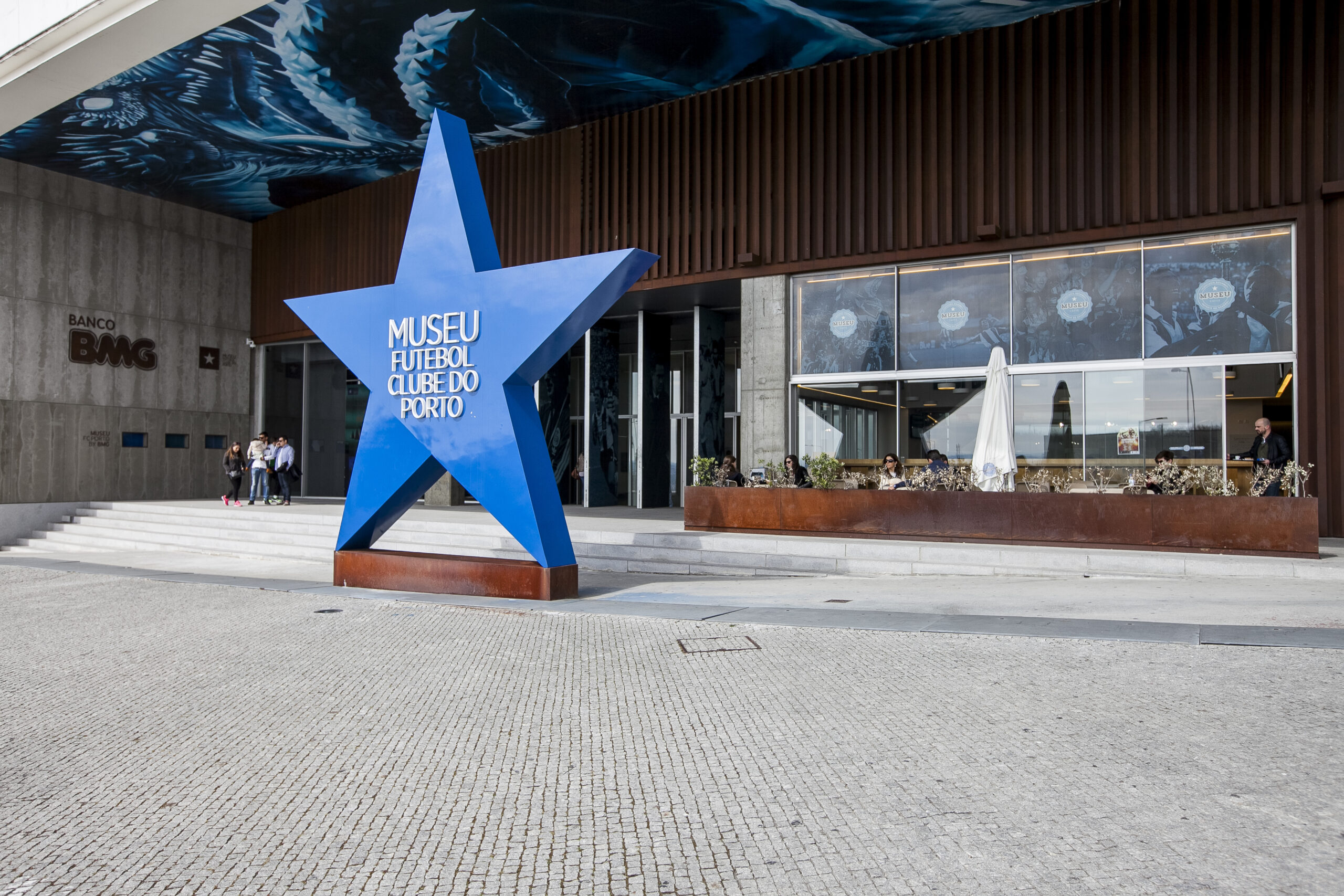
Nightlife
Now for the good stuff. Porto may be a city of just 230,000 people, but the nightlife is unique, intimate, and memorable.
Pretty much every going-out spot flanks either side of Aliados, and even if you don’t feel like walking 15 minutes across town, the car prices are cheap (€5-10/$5-11 on a busy night). There are, of course, the official queer hotspots—the places you get when you Google “gay bar Porto.” Zoom is the big winner here, the only place in the city I feel like I can really rely on if I want to hear singalong radio hits (and queer ones at that). And, looking beyond the crowd’s appropriately ear-shattering renditions of Olivia Rodrigo songs, there’s actually a pretty even split between gays and sapphics. Syndikato Club and Café Lusitano are also some of the places that’ll pop up, drawing a beyond-college crowd.
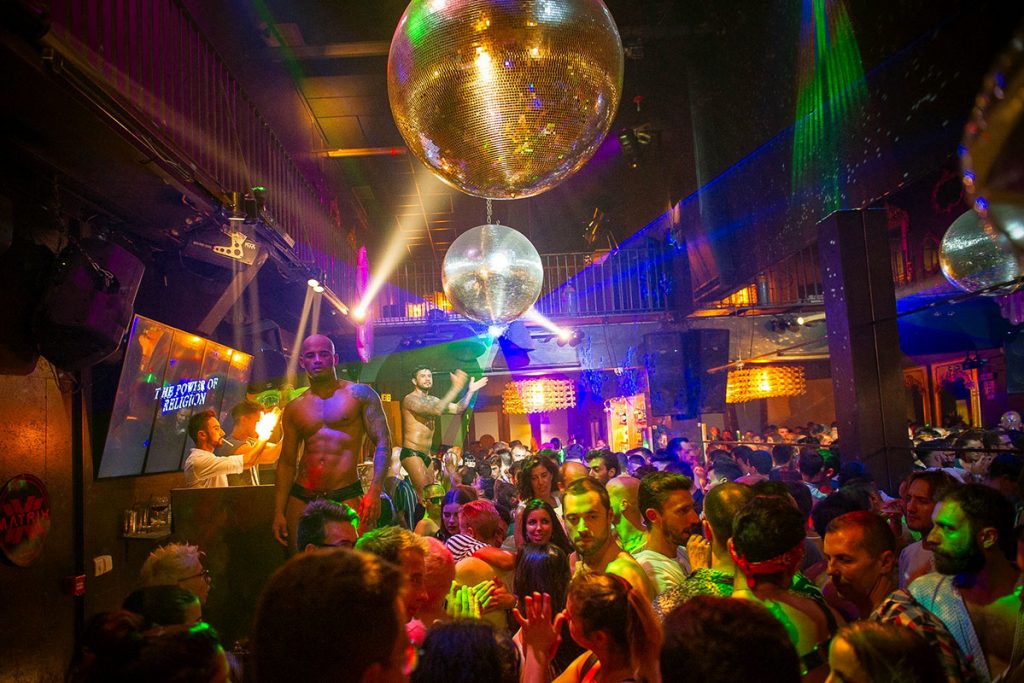
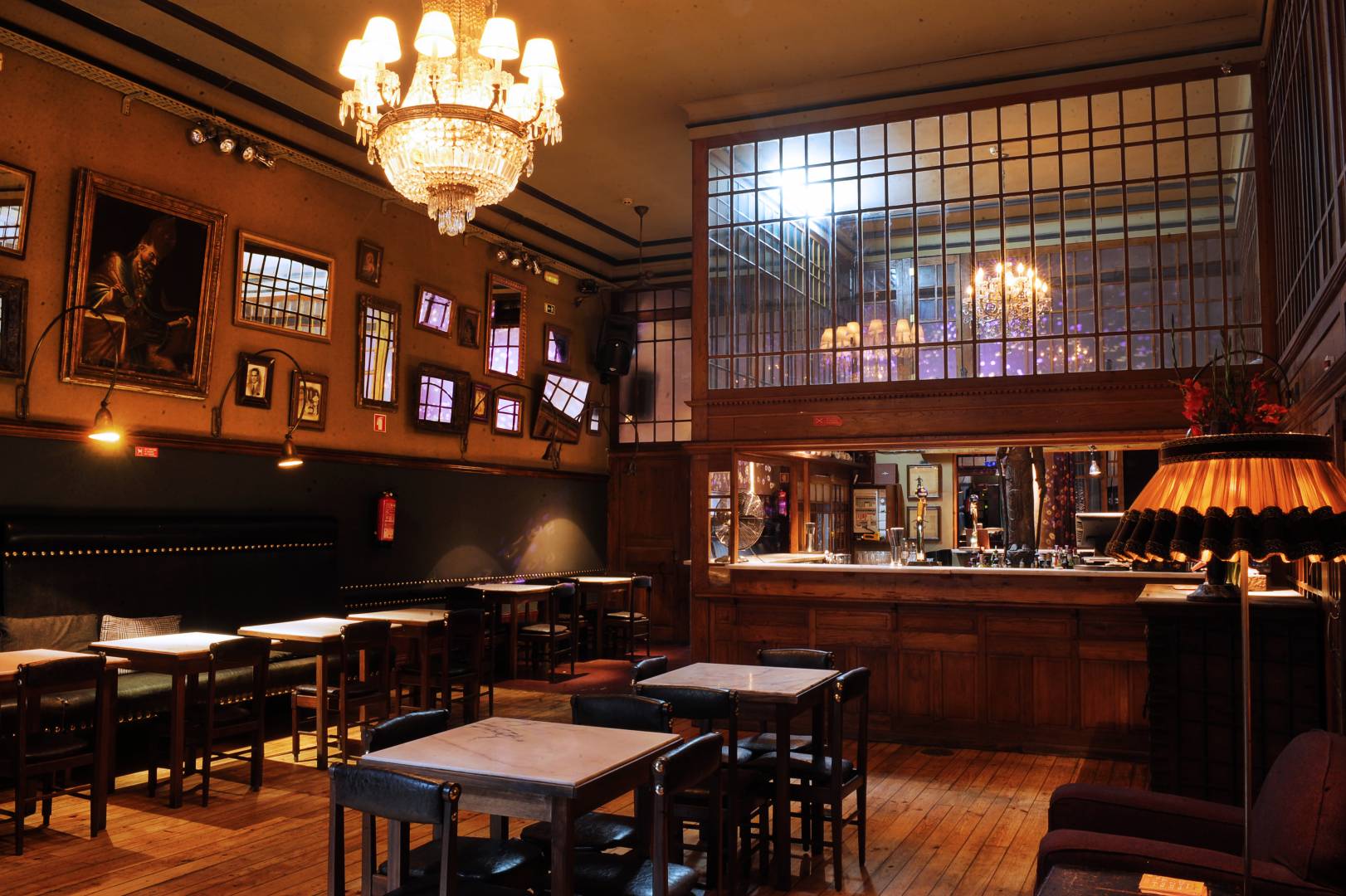
The less official gay spots are the real draws, and there are far more than there appear to be. Ask any of the city’s cool queers and they’ll likely direct you to Taskinha, a hole-in-the-wall spot next to a wide, blocked-off alleyway. It’s where you’ll find all of the alternos, the Portuguese slang phrase for alternative kids. Even if alternos isn’t your vibe, the area around Taskinha is still a sight to behold in the daytime with its graffiti-splattered walls. Walking farther down Rua dos Mártires da Liberdade leads you to a smattering of antique camera shops and vintage knick-knack stores.
Then there’s Maus Hábitos, a multipurpose space that’s one of the most artistic spots in the city: it’s a cinema, a concert hall, a gallery, a restaurant, and a dance floor. It’s extremely cool, and that’s exactly the kind of people it attracts. And, like gay clubs in other cities, it frequently has theme nights, like the killer Beyoncé night they had a few weeks back where my friend saw not one but two of his former flames. (The dating scene, like the city, gets intimate.) Passos Manuel has a similar vibe, with DJs, cinema screenings, and dance parties. And if you’re looking for concerts, Auditório CCOP and Ferro Bar attract queer crowds depending on which artists are playing there.
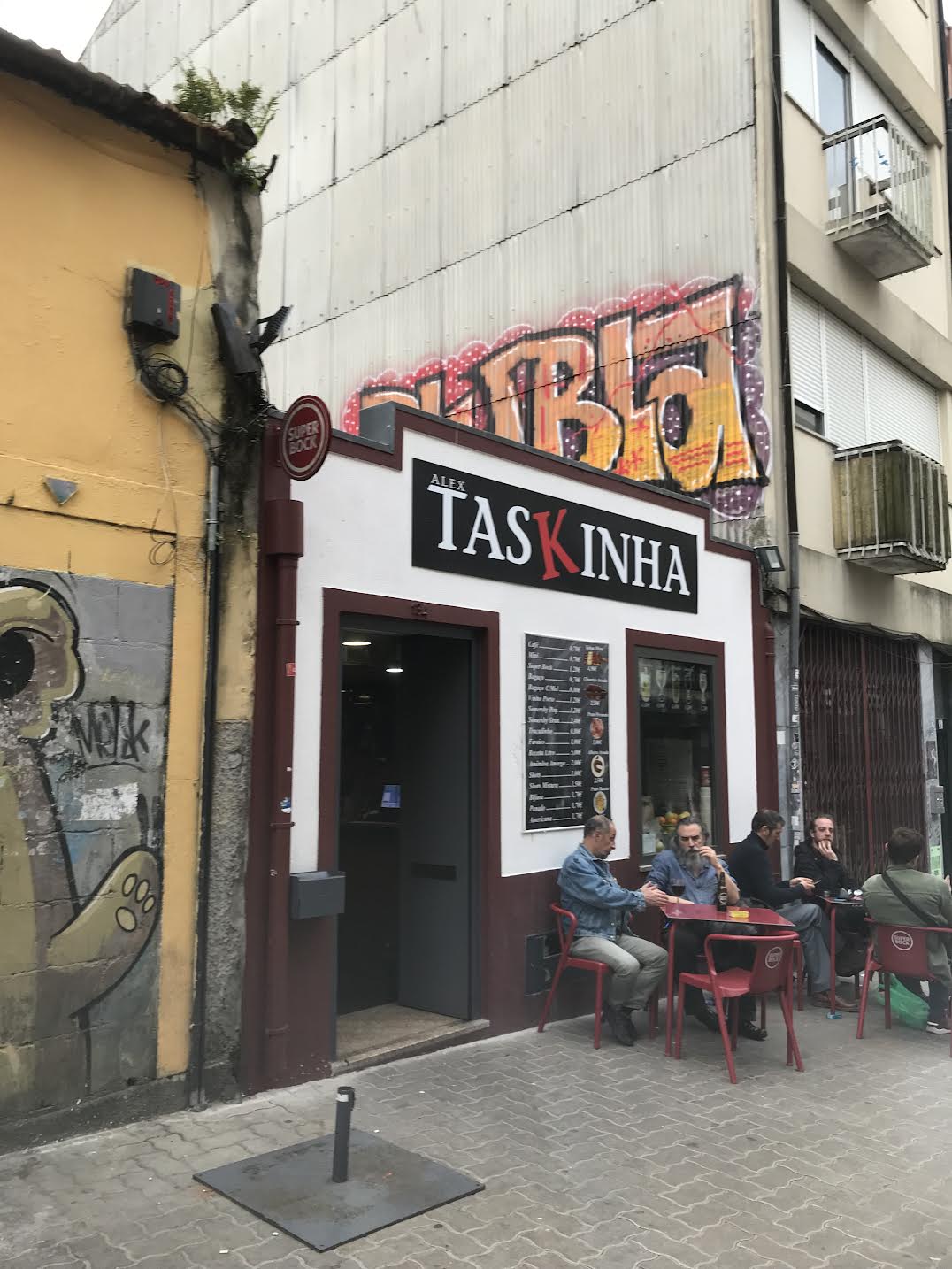
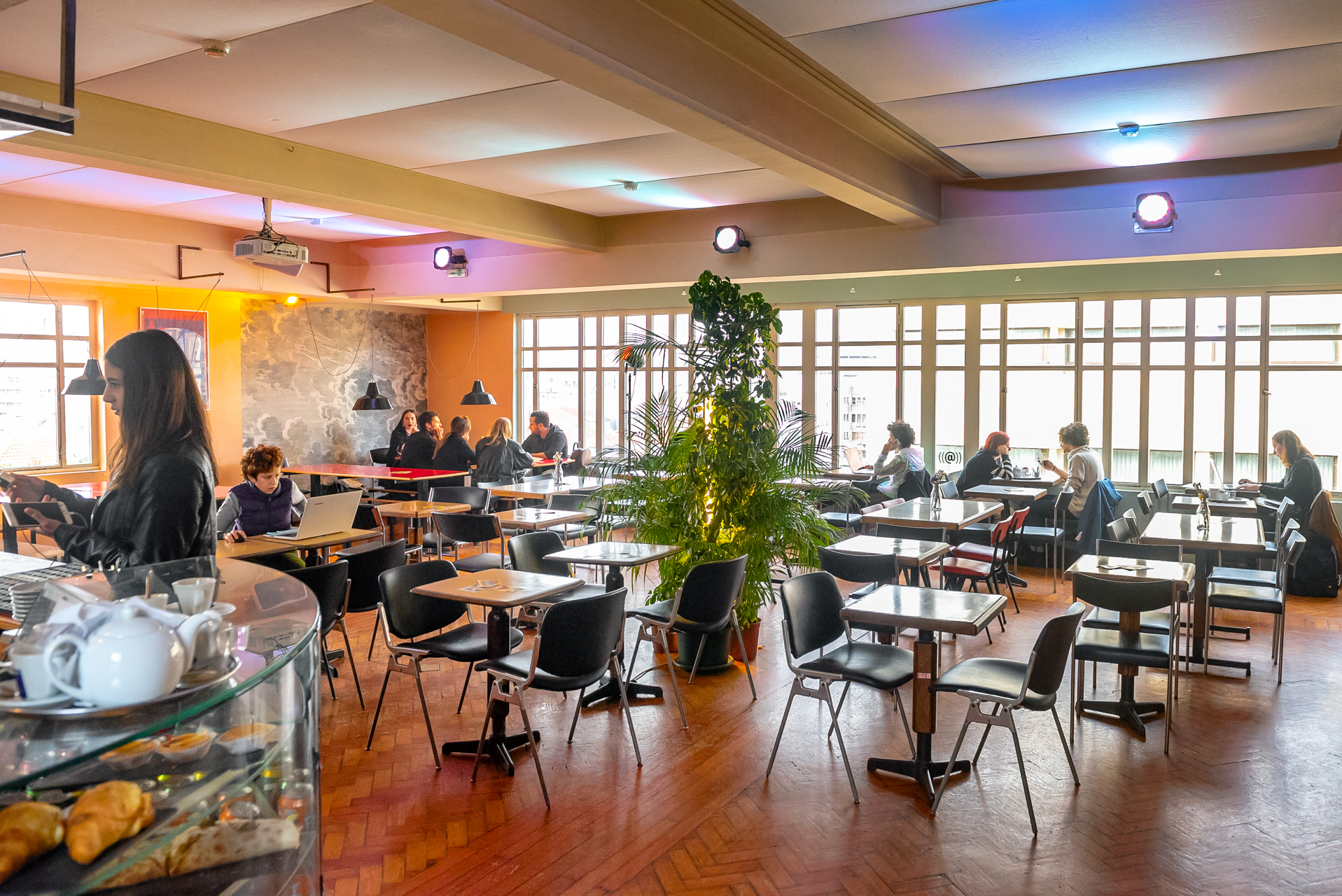
There are even some gems to be found around Galeries de Paris, the three-street area next to Clérigos that’s characterized by floating mannequins dressed in finery and a surplus of Erasmus kids. The doors to MoreClub only really become apparent when there are lines behind it on a weekend night, but if you’re queer and in Aliados, this is the spot. MoreClub might seem like a curveball, given that Galeries de Paris and neighboring Cordoaria attract the straightest of the straights, but there’s something about More that’s so… lesbian. Just trust me on this one.
Finally, if you’re queer in Porto and searching for a certain, er, fragrant liquid, Mister Cock is your best bet. Located just a couple of blocks behind Trindade and only open 2-5 pm on weekdays, this gay sex store is a little limited, with more of a focus on underwear and poppers than sex toys. But after three months of searching, that’s all I needed: when I finally made the limited hours, I marched in with a backpack in tow, looking a full twelve years old, and bought my poppers. I lost them the next night, as I should have, and all was right in the world.

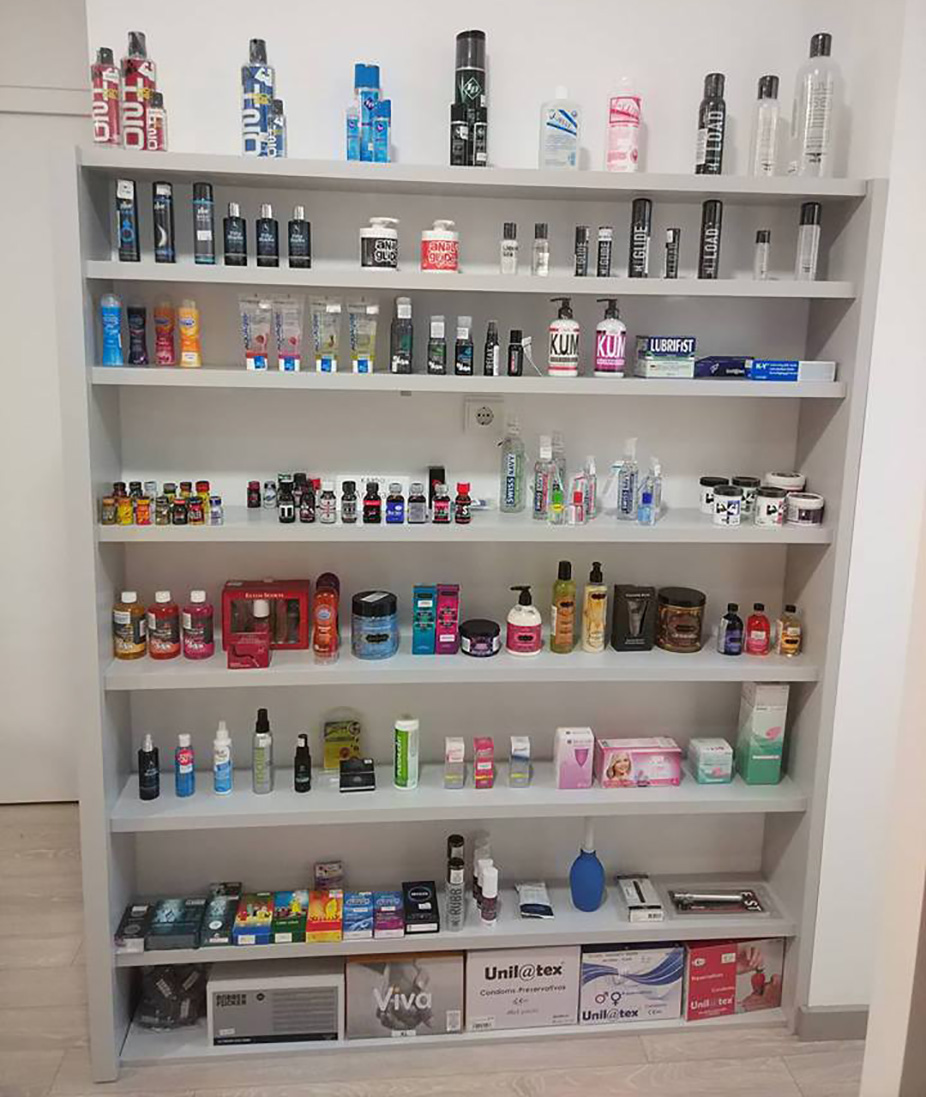
So, if you’re looking for a getaway with beautiful views, unique cuisine, and solid queer nightlife, Porto is the place for you. It’s charming, lively, and just small enough to get to know intimately in a week. Come – rainbow flag – and all!

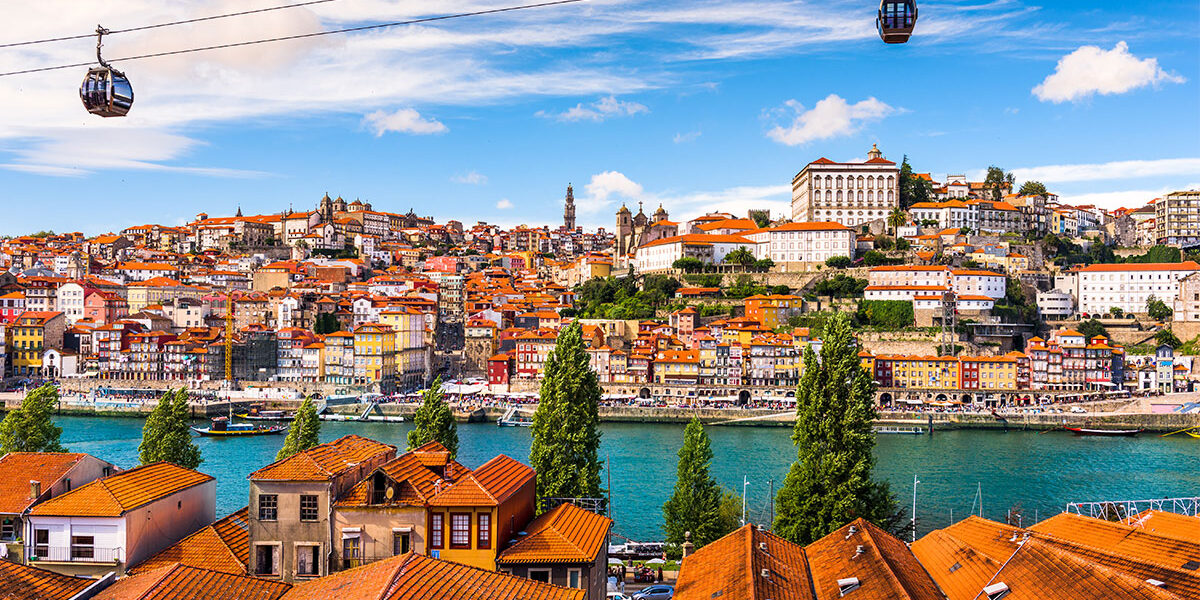

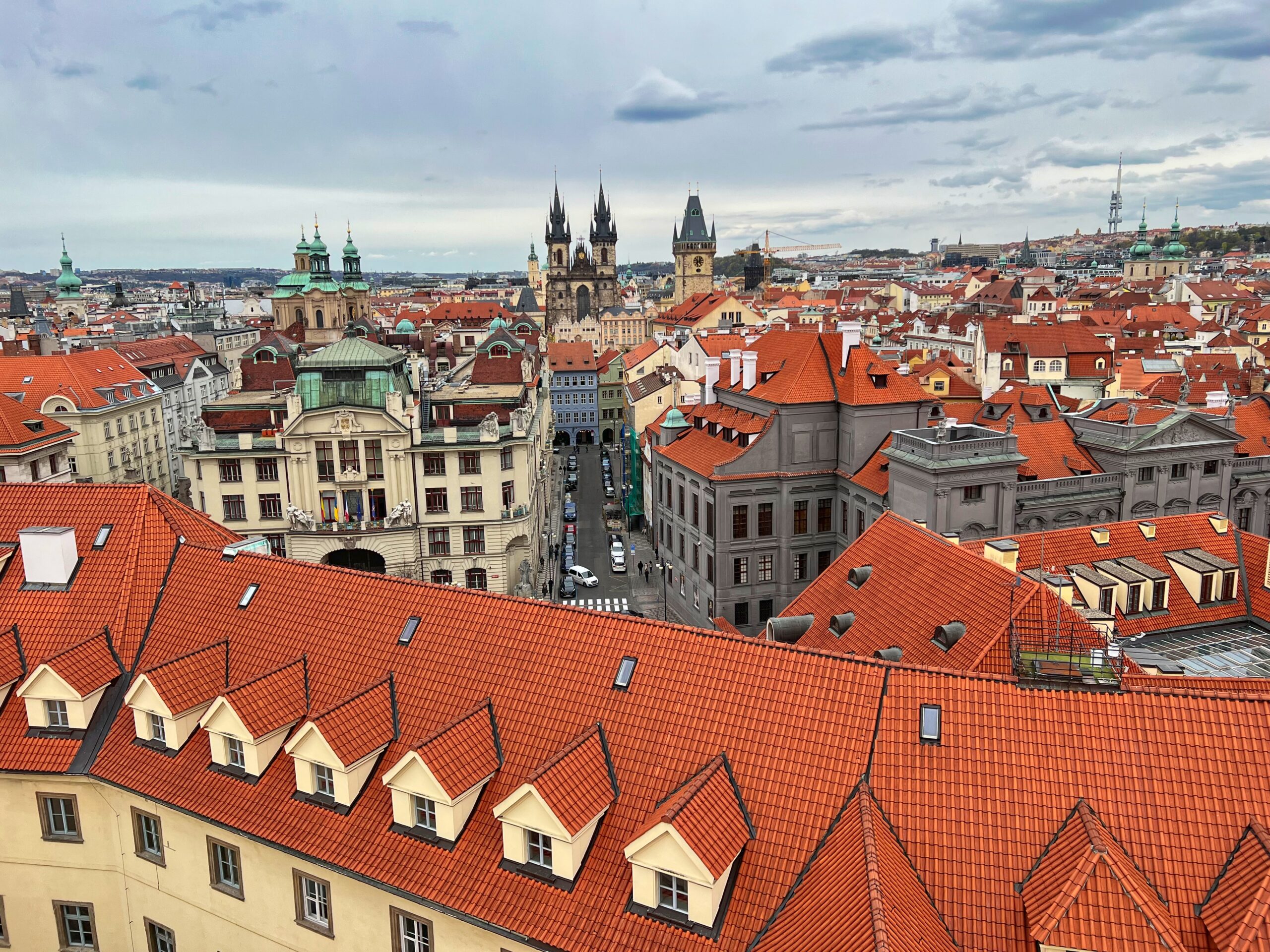

Cafe Lusitano, which markets itself as an inclusive LGBTQ+ venue in Porto, sadly operates a homophobic and discriminatory door policy. As three gay men, one of whom is non-Caucasian, we were refused entry to the club for no other reason other than Lusitano door staff’s being openly anti-gay and racist. Please do not visit this venue and boycott it as it not only contravenes EU anti discrimination laws, but in 2023 should not be allowed to remain open and operate under the guise of being queer and inclusive when it is actually an anti-gay and openly racist venue.
Good to know! Thanks, Marc!
People, go to Rato (Gmaps: 87RW+VJ Árvore, Portugal), A nice quite place in the countryside of Porto 🙂